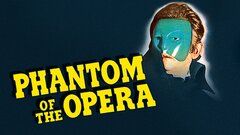Lon Chaney was an American actor, director, writer, and makeup artist who revolutionized acting on film through his groundbreaking use of makeup and prosthetics, which he utilized to play a wide array of often grotesque and tortured characters, and still remains an icon of the silent film era to this day. Born Leonidas Frank Chaney on April 1, 1883 in Colorado Springs, CO, Chaney's interest in acting began out of necessity: both of his parents were deaf, so communicating with them was in essence an act of pantomime.
Chaney was nineteen years old when he began acting professionally, traveling the country as a Vaudeville and theater performer. In 1905, the 22-year-old Chaney married 16-year-old singer Cleva Creighton; the next year their only child, a son they named Creighton Tull Chaney, was born. Eventually the family settled in California, but their marriage began to flounder.
The breaking point came in 1913, when Cleva attempted suicide by swallowing mercuric chloride at the Majestic Theater in downtown Los Angeles, where Chaney was producing a vaudeville revue. Cleva survived, but she was unable to continue singing as a result of the poisoning. Soon afterwards, the couple divorced, young Creighton was placed in protective care, and Chaney was forced out of the theater scene. He would focus on working in film for the rest of his life.
From 1912-1917, Chaney worked exclusively under contract for Universal Studios, doing bit parts, sadly, the majority of these films have since been lost to time. During this time, Chaney made some important connections, beginning a collaboration with the husband and wife director team of Joe DeGrasse and Ida May Park, who gave him substantial roles and encouraged him to play darker characters, and in 1915, marrying a chorus girl named Hazel Hastings.
This pairing would prove to be much happier than Chaney's first marriage, and the new couple was able to gain custody of Creighton, who was now 10 years old, and had been raised in various homes and boarding schools since his parents' divorce.
Chaney then began a collaboration with fellow actors Dorothy Phillips and William Stowell, which began with the trio starring in "The Piper's Price" (1917). Between that and their final film together, "Paid in Advance" (1919), they would appear alongside one another in a whopping fourteen films. However, it was his role in "The Miracle Man" (1919) that would make Chaney a star. Critics and audiences were wowed by Chaney's acting ability, but also by his use of makeup.
Before Chaney, makeup in cinema was almost non-existent, aside from a fake beard or goatee used to denote a villain. There were no professional makeup artists, so actors were expected to do their own makeup. Chaney's skills with makeup earned him the nickname "The Man of a Thousand Faces," and gave him a huge advantage professionally: he could play any role given to him, and sometimes, like in the case of "Outside the Law" (1920), he could play multiple characters.
Many of the characters he inhabited, such as Quasimodo in "The Hunchback of Notre Dame" (1923) Erik, the deformed ghoul who haunts the Paris Opera House in "The Phantom of the Opera" (1925), and the ghastly Man in the Beaver Hat from "London After Midnight" (1927), are still iconic to this day (which is remarkable, considering that "London After Midnight" is one of the most sought after lost films ever), largely because the horror of their visage is tinged with a degree of sympathy and pathos that Chaney was able to exude.
Audiences may have been frightened and enraptured by Chaney's onscreen appearance, but they knew very little of the man offscreen. Chaney was notoriously private; he did almost no promotional work for any of his movies, gave very few interviews, intentionally avoided the social scene in Hollywood, and by all accounts lived a quiet life of domestic bliss with Hazel and young Creighton when he wasn't working. Despite this reticence to socialize, he was beloved by his fellow actors, known for mentoring young aspiring thespians, and always willing to share his professional observations with both cast and crew.
Sadly, Chaney's reign as a Hollywood superstar would prove to be short-lived. While filming the melodrama "Thunder" (1929) in the winter of 1929, he came down with pneumonia. When his condition didn't improve, Chaney returned to the doctor, and was diagnosed with bronchial lung cancer. Despite this, he continued working on the film, which proved to be a grave mistake: during filming, artificial snow, made out of cornflakes, became lodged in Chaney's throat, creating a serious infection.
On August 26, 1930, mere weeks after the release of his lone "talkie" picture, "The Unholy Three" (1930), Lon Chaney died of a throat hemorrhage at the age of 47. Even in death, Chaney remained mysterious: for reasons unknown, his crypt at the Forest Lawn Memorial Park Cemetery in Glendale, CA remains unmarked.
Three years later, his wife Hazel passed away, and was interred next to her beloved husband. As for young Creighton, he would continue his father's legacy of playing grotesque and tortured characters. Audiences came to know him as Lon Chaney Jr.


































































































































































































































































